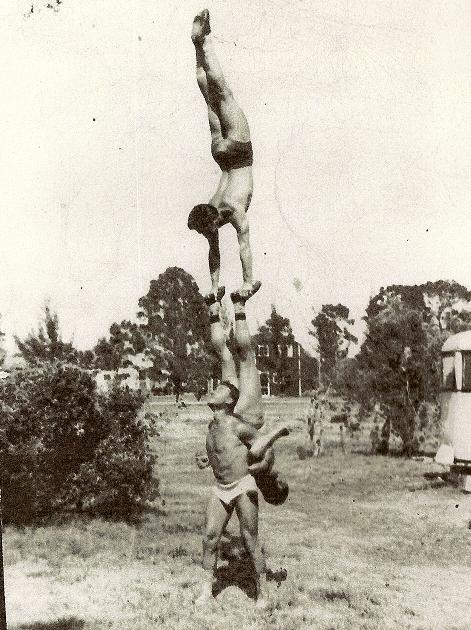Got two more handstand questions I’ll dig into today. I have to admit the quality of the questions has stepped up recently at least for the most part. Submit yours at https://lostartofhandbalancing.com/question.html.Here we go. The first one is from Ari.
“OK, Logan, I can balance on my hands, and I have the strength to do handstand pushups, but maintaining balance in an HSPU seems almost impossible. As I lower from the handstand my weight always starts to move to the ventral (stomach) side and unless I bend my legs at the knees so my calves counterbalance the weight, I lose my handstand. How do you maintain a straight bodywhile doing a handstand pushup?”
The first step is to make sure you have the strength to perform the move. When most people do handstand pushups against the wall it’s in an alignment that makes the pushup easier than the form you have to take for a free standing handstand pushup. This is a big topic in and of itself that I’ll have to dig into another time.
The important thing is to have an excess of strength. It’s not good to be burned out after two attempts, since you need to ‘practice’ the move. Onto the balancing.
It is going to be slightly different depending on how straight or arched you are. The thing is that your body will be at an angle and not perfectly vertical from the ground. When your head touches the ground it should be in a triangle formation with the hands. Like the headstand except you don’t rest on the head.
Because of this the upper body and lower body are on different sides of your center of gravity. As if you were lowering down toward the planche.
The most important thing you have to do in order to keep the balance and not fall toward the feet is keeping yourself toward overbalancing. The pressure must be toward your fingers at all times. If you go toward your palms you’ll lose it.
Of course the body has to be kept real tight at the same time. But keep the weight toward your fingers and you’ll be able to stay balanced while doing the pushups.
And here’s one from Ron.
“I’ve been doing handstand training for the past 4 months. For the purpose of experimentation, what are the effects of different hand positioning? In other words, if you spread your hands wider apart, does that provide any benefits, as opposed to keeping the hands at shoulder width?”
Here’s the words of Professor Orlick, from the beginning of chapter 11 in Hand Balancing Made Easy.
There is a two-fold purpose for learning these (that is handstands with different hand and arm positions). The first is for the stunts themselves, they look good, impress your audiences and give you personal satisfaction.
The second is for excellent balance they develop. When you vary the position of the hands you are forced to balance less and less with the fingers and hands themselves and more and more with the body as a unified whole. This may not be clear to you right here but after you learn a few of the stunts which are described you will understand exactly what is meant.
He then goes on to list 14 handstand exercises with different hand and arm position and even more in the next chapter. For details on the exact ones check out Handbalancing Made Easy.
But that explains it well enough. Changing your arm position will work your balance to a higher degree. These variations are good to throw into the mix from time to time.
Good Luck and Good Hand Balancing,
Logan Christopher
P.S. Just to let you know there’s going to be changes to a few of the products next week.










